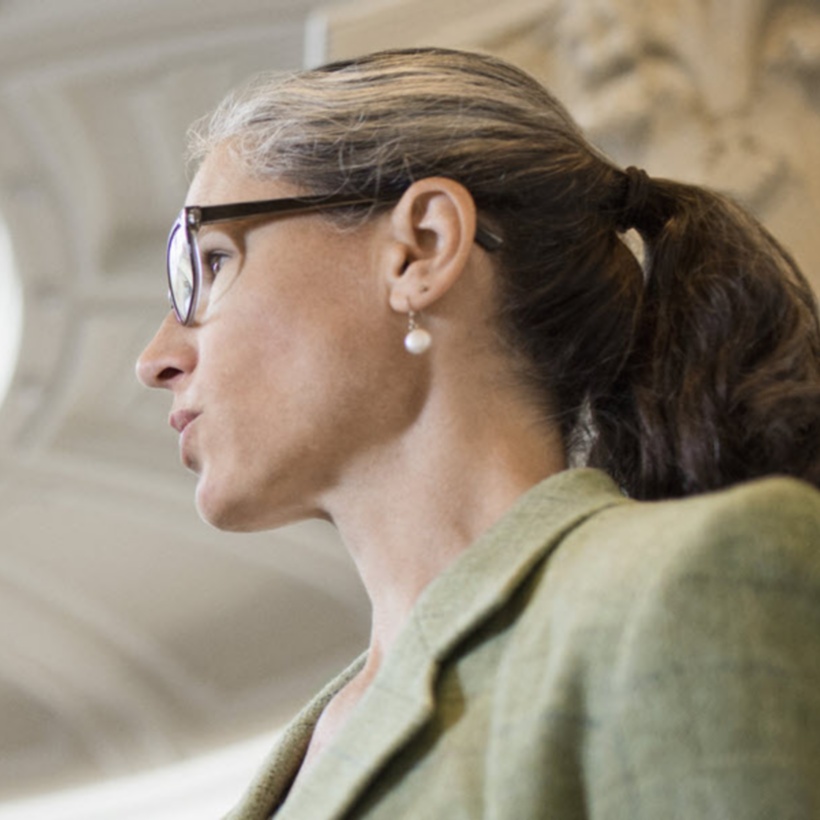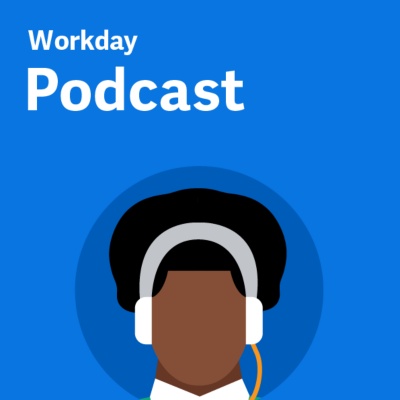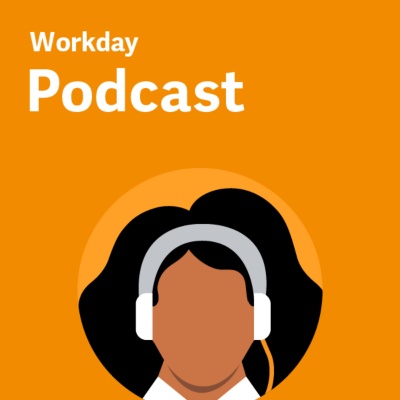Rich McKay: Across the United States, employers are trying to build more diverse and inclusive workplaces. And nowhere is that work more important than the US’s biggest employer: the federal government.
But with four million employees, federal agencies have a challenging road ahead. So how can government leaders get started on building more equitable workplaces and a culture of belonging? And what steps can federal agencies take to drive sustained long-term progress?
This is Rich McKay of Workday. Today on the Workday podcast, we’re talking with Dr. Gina Guillaume-Joseph, CTO of government at Workday. She discusses how federal agencies can attract and retain talent that truly reflects the America they represent, how they can hold themselves accountable by measuring the right outcomes, and the role data and technology can play in improving their diversity, equity, inclusion and accessibility (DEIA) strategy.
So today on the podcast we have Dr. Gina Guillaume-Joseph. Welcome to the podcast.
Dr. Gina Guillaume-Joseph: Well, thank you. Right. I'm excited to be here.
McKay: You recently joined Workday as the CTO in federal government, could you share your career journey and more about your role at workday?
Guillaume-Joseph: Absolutely. So I recently joined Workday to serve as chief technology officer for government, where I'm so excited to lead with years of experience across the commercial and federal spaces as both a practitioner and an academic. The vast majority of my professional career has been spent supporting technology efforts within the government. With my doctoral studies in systems engineering, I built a predictive analyst analytics and machine learning model, using data on failed and successful projects discussed in government accountability reports, public court proceedings, and other reliable sources to identify and predict the root causes of software project failure, all of which amplified by awareness of the opportunities for progress. And so I feel I'm uniquely positioned to understand the evolving requirements of government. And I'm so eager to sustain Workday’s best in class outcomes as we continue to serve this critically essential domain.
McKay: Thank you so much. We're very excited to have you at Workday as well. What motivates you about government and technology and the role they play in DEIA?
Guillaume-Joseph: The funny thing is I've never supported a government agency that has employees who are just leisurely waiting around for work queues to fill up. To the contrary, the opposite is almost always true. These employees rarely get ahead of their never-ending queues. And sometimes we see that ourselves as customers waiting for critical government provided services and technology and the ability for their employees to support that technology plays a big role in these backlogs. The government understands this, and is embarking on their technology transformation journey. For example, the 2019 Federal cloud computing strategy, cloud smart is a long-term strategy to drive cloud adoption in the federal agencies. It was the first cloud policy update in seven years, and it offers a path forward for agencies to migrate to a safe and secure cloud infrastructure to achieve savings, security, and deliver faster mission serving services. And one of the key tenants is workforce. And their goal is to upskill, retain, and recruit key talent for cyber acquisition in cloud engineering. This is in an effort to address the pipeline challenges and to encourage women and minority underserved groups to explore and stay in the technology field.
McKay: A year ago, President Biden issued an executive order on DEIA. His main goal is to improve the federal government's ability to attract, develop, and retain talent that looks like America. So what can government agencies do to improve their DEIA strategy?
Guillaume-Joseph: The order was established that affirmatively advanced equity, civil rights, racial justice, and equal opportunities, as being the responsible of the whole of our government, in order to cultivate a workforce that draws from the full diversity of our nation, and a workforce that reflects the diversity of the American people. Therefore, their goal is to make sure that agencies strengthen their ability to recruit, hire, develop, promote, and retain our nation's talent and remove barriers to equal opportunity. And also, they wanted to ensure they provide resources and opportunities to strengthen and advance diversity, equity, inclusion, and accessibility across the federal government.
So a growing body of work and evidence demonstrates that diverse, equitable, inclusive, and accessible workplaces are more innovative and yield higher-performing organizations. So it's in America's best interest to ensure there is DEIA parity in government and industry as a whole. As we'll learn later, it's the collaboration with government, industry, and educational entities to ensure that DEIA efforts continue.
McKay: With 4 million employees working for the federal government, this DEIA effort seems like a huge undertaking. Where do you recommend government leaders start?
Guillaume-Joseph: As the nation's largest employer, the federal government must be a model for diversity, equity, inclusion, and accessibility, where all employees are treated with dignity and respect. To make a significant difference long term, the government and industry as a whole must be willing to take a data-driven approach to DEIA and treat it the way we treat any other business problem. You identify a problem, you identify your opportunity space, you gather the data, you establish your metrics to set baselines, and then you measure progress. And then you keep trying new strategies until you meet your goals. That's something companies have not focused on in the DEIA arena.
McKay: So how can organizations in both the public sector or the private sector make more inclusive and equitable places for their employees?
Guillaume-Joseph: They can do better by working to understand their workers by examining intersectionality, measuring outcomes across the employee lifecycle, and spotting areas of inequity. At Workday, we created the VIBE index, because we needed a way to measure our own performance across the entire employee lifecycle--hiring, promotions, leadership, belonging and attrition and see how we were doing within employee groups. Looking at various intersections, represented in an easy-to-read heat map, we can easily compare progress across employee groups, and identify the areas that need the most attention. For example, the VIBE form, it's based on a group of outcome scores, as well as variants between the groups, which indicates equity, or parity. They also have the heatmap. This displays our areas of opportunity, where there’s the least amount of parity across outcome groups. And that allows us then to put in the effort to fix any areas that we see are lacking or lagging in the goal to meet DEIA parity.
McKay: You previously mentioned that government must take a data driven approach to DEIA. And so what role does data and technology play in building a more diverse and inclusive government?
Guillaume-Joseph: Data and technology are imperative and crucial in building DEIA in government. As I mentioned, we must measure outcomes across the employee lifecycle to spot the areas of inequity. And the only way to measure outcomes is to leverage the power of data and technology. And then after measuring outcomes, organizations can look to specific correlators or indicators to drive those opposite outcomes. For example, we may notice low hiring first or an intersection group. But where in the process is the issue? Is there a lack of diverse candidates applying that's part of sourcing? Or are the diverse candidates dropping off in the pipeline, the conversion ratio between the screening and the interview stages? Those are critical questions in order for us to get to the root causes. And this type of analysis allows us to dig deep into the data to find the indicators and analyze where the issues are in order to effectively address them by implementing processes to mitigate and remove those barriers and issues.
McKay: How can government leaders ensure a DEIA strategy impacts the full employee lifecycle, meaning like recruiting, training hiring engagement promotion unit Amen.
Guillaume-Joseph: I can't stress enough how important measuring outcomes across the employee lifecycle is. It makes it transparent and clearly visible, then we can act on the data findings. For example, the actions you might take in mitigating the low hiring of a certain intersection group include expanding your talent pools, masking candidate identities to prevent unintentional bias, and building learning paths to help employees onboard. We will then continue to measure to see if we have improved, and if we haven't, we will take action. And then the cycle of measure, mitigate, take action, and repeat continues until we get to DEIA parity for all. That's the goal.
McKay: One thing that seems to have been revealed, as crises often reveal, especially during the pandemic, is this digital divide. For example, if children had to remotely dial in for school, or people were looking for jobs, but they didn't have access to a computer or access to even the infrastructure or the skills needed to use a computer,how can the government solve that digital divide in communities that they serve?
Guillaume-Joseph: Well, this question speaks to the accessibility problem in DEIA. The digital divide is an economic, social, and political issue. It needs to be a collaborative effort with policymakers, governments, corporations, and education institutions. To help the schools, the learners, and the teachers get access to technology to increase digital literacy. The digital divide is a tremendous curse for modern society. Technology discrimination makes it extremely difficult for the poor and disenfranchised populations to receive adequate education to ultimately build a prosperous career in the future. As the digital workforce grows, students with technical skills will receive better employment opportunities. And then those who don't have basic technology knowledge will be left behind. According to a statement by the United Nations, governments can significantly reduce the digital divide gap if they reduce the prices of technology, technological devices, Internet services, electricity, tariffs, and taxes. But simply reducing the price is not enough. We must give technology access and build the underlying infrastructure to those underrepresented neighborhoods and school districts at a reduced or free rate. Similar to how we already calculate free or reduced lunch in the United States, for example.
McKay: How has the DEIA conversation changed in the past decade, and even really the last few years?
Guillaume-Joseph: The paradigm shift to remote work in the career shuffle set off by the Great Resignation as a result of COVID also intensified DEIA issues. As employees are now in the driver's seat, surveying their career options, and evaluating other softer factors than just compensation or location. For example, women with children have been especially strained to deal with working and schooling at home, like myself. I'm a working mom. With three teenage daughters, and COVID and the strains of it, was difficult for our family. I was looking for more flexibility from my employer. And over the last year, the most frequent action taken by companies on the DEIA front has been to conduct DEIA-focused employee listening, surveys, and focus groups. And 47% of the respondents to the survey by the American productivity and quality center indicated we are taking action, and employees saw a 36% increase in staff dedicated to DEIA, 32% of organizations increase their DEIA budgets, 31% established new avenues for reporting DEIA complaints, and 30% had disclosed DEIA metrics publicly and invested more in employee resources and new groups. But there's still more work to be done.
McKay: It's too easy to forget how challenging those years were. I mean, I can imagine with three teenage daughters, it was extra challenging for you. I have a seven-year-old and balancing school with work and back-to-back Zoom meetings was very stressful. My next question is: what are the conversations about DEIA that we should be having, but aren't for whatever reason?
Guillaume-Joseph: So many organizations continue to focus on the diversity piece because you can see it across your organization. Inclusion is hard. Inequity is even harder. But accessibility isn't even on the agenda. Yes, we focus on filling the pipeline and getting people in, and hiring and screening and attracting, but organizations aren't doing the really hard work of pushing their sleeves up, looking at their infrastructure, and answering, “Why are people leaving?” Yes, you have the exit interviews. But are we really putting effort into formulating questions and gaining data insights to understand the causes of attrition? I don't think we are. And for that reason, some of the newest DEIA actions won't be enough to truly change a company's culture. Yes, they will increase belonging for people of color and underrepresented minority groups, at least in the short term. But if we still have well documented forms of bias constantly being transmitted through the talent management systems, and access to opportunities, then not much is going to change. When you understand this very important question, why are people leaving, as it relates to one's organizational structure, infrastructure, and culture, then you will get to the root cause of the leaking pipeline. And the data around it will help us fix some of these DEIA challenges.
McKay: With the federal government, what trends, technology, and changes are coming over the next few years? Any predictions about what to expect and how leaders can prepare?
Guillaume-Joseph: According to the Foundry’s State of the CIO study, the technology initiatives that are expected to drive the most IT investments over the coming years are security and risk management, data and business analytics, and application and legacy systems modernization. We see that in the federal space, with customer experience technologies that were brought to light during COVID, and with cloud migration. To realize the benefits of these investments, we as leaders must embrace and adopt the innovation mindset as we did during COVID.
Unfortunately, terms like transformation, innovation, and cloud are casually tossed around in today's narrative. And speaking of the latter, the term cloud is all too often misappropriated. What really matters in true cloud architectures is how they're designed, developed, deployed, and maintained. Whether they are served from private cloud, public cloud, hybrid cloud, and so forth is just a commodity.
Workday entered the market in 2005 as a cloud-first and cloud-only service provider, in our relentless commitment to a single version service. Every one of our customers—including the most risk averse and highly regulated organizations on planet Earth, the federal government, as well as financial services—allows us to dedicate our energy, passion, and our commitment toward a future improved by collective scrutiny and innovation. When you think about innovation, it's about innovation for everyone, innovation for all. We don't just talk about innovation. We deliver based on that singularity of focus to a community of customers operating on a common framework of a single version service. Innovation in the cloud is our competitive advantage. Our ability to continually evolve and change the way we execute without the lag and re-implementation. Not having to go through the costly waterfall approach of delivery, measured in years versus a weekend like COVID was for us. I was not at Workday at the time during the COVID pandemic, but I was at Capital One. And we leveraged the vaccine and return to office capability, the speed that Workday made this available to all of its customers demonstrated Workday’s admission of a single version service.
McKay: Do you have any final thoughts about this topic?
Guillaume-Joseph: If Workday can apply hundreds of billions of clean, secure, and canonical transactions against math equations and call algorithms to generate the recommendations and augmentations needed to work better, faster, and smarter, then I'll call that a huge win for everyone. And the best part is, we're already doing some of this today in Workday with live machine learning models that are built on a scalable platform level framework. And we're helping our customers solve discrete problems across the domain of finance and HR, like rationalizing a worker’s skills in our quest to improve DEIA and gain parity for all. Or working to reduce cyber risk investments, and protecting data against cyber attacks. The opportunities are immense and palpable. And I'm so eager to see us advance these capabilities to support an efficient and effective government workforce, who then work to better serve the US population. And in this case, the constituents of the federal government.
McKay: Well, thank you so much. Really appreciate your time today. It's been a really wonderful and insightful conversation. It's been great to get to know you, and learn more about your thoughts and insights into DEIA and government. So thanks for joining us today.
Guillaume-Joseph: Absolutely. Thank you. It's my pleasure. And in fact, in you know, researching for these questions, I too learned and identified some things that I need to do as a leader to bring us to parity.
McKay: Thank you for listening to our conversation about how U.S. federal agencies can improve their DEIA strategy with Dr. Gina Guillaume-Joseph of Workday.
Be sure to follow us wherever you listen to your favorite podcasts. And remember, you can find our entire catalog at workday.com/podcasts.
Thanks for tuning in, and I hope you have a great work day.





